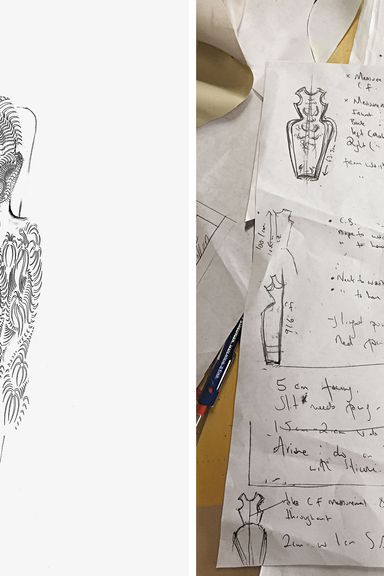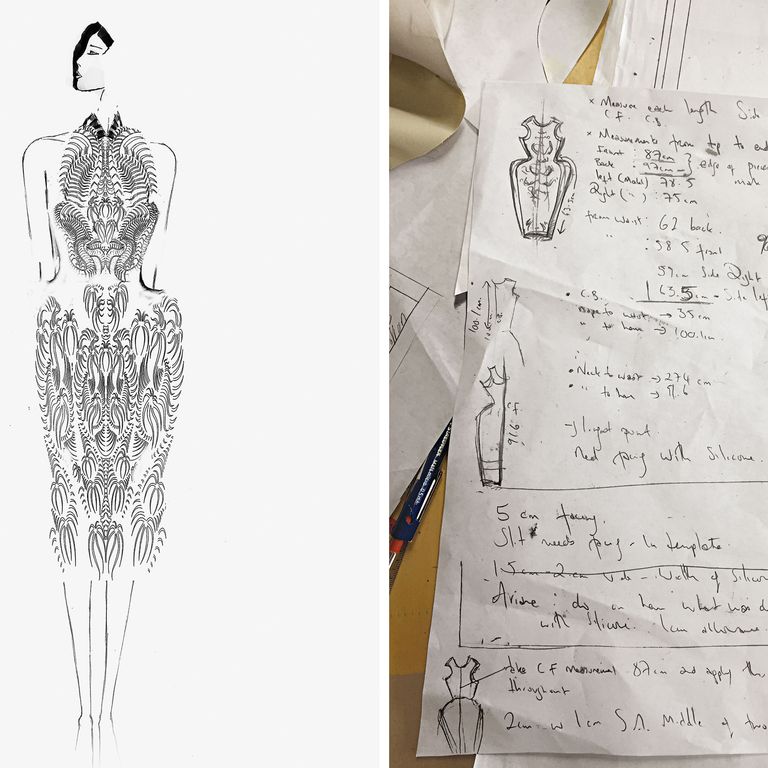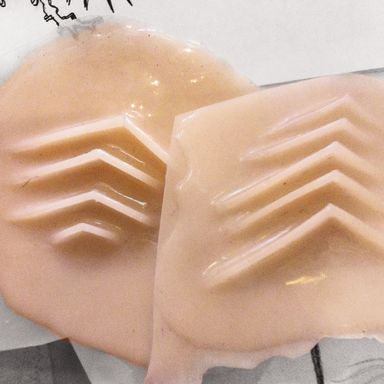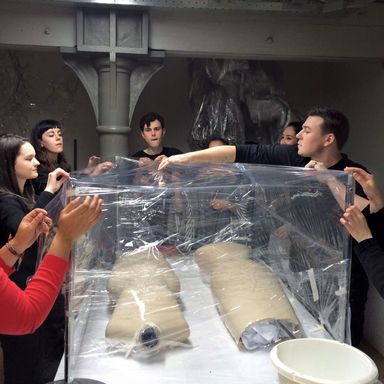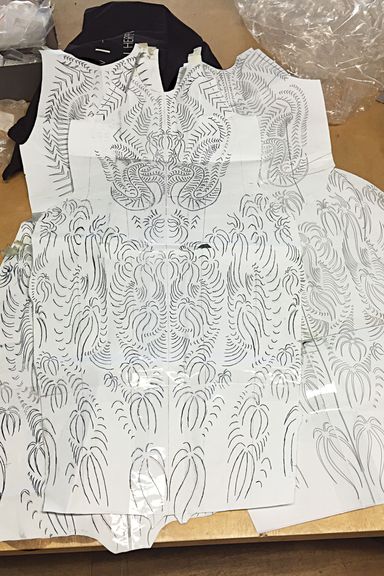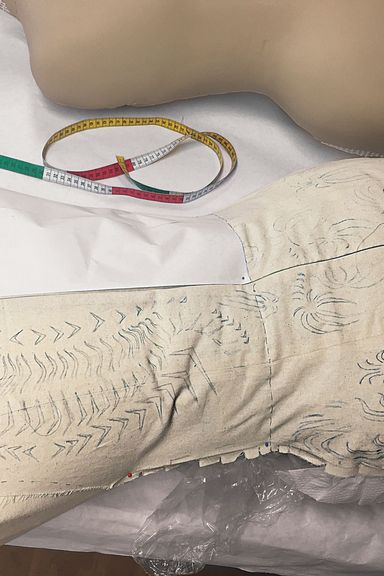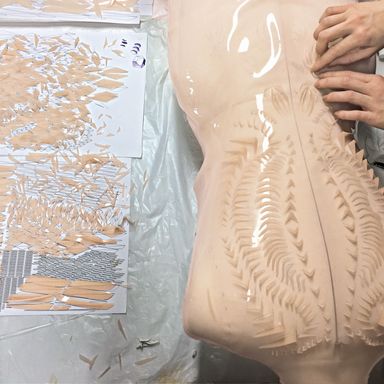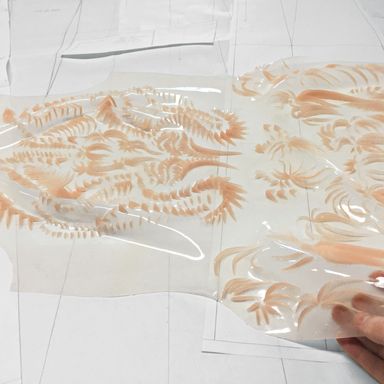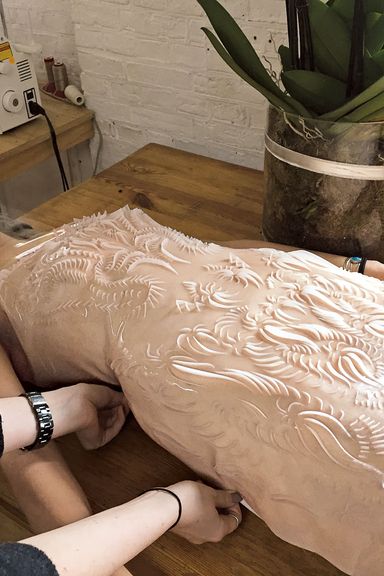The Designer Who Mixes Cutting-Edge Technology With Couture Tradition
Factory smoke, lucid dreams, alchemy, synesthesia. These are the preoccupations that have taken up residence in Dutch designer Iris van Herpen’s brain and inspired some of the most out-there collections to ever walk a couture runway. The 31-year-old has been pegged as a “wearable tech” designer, a title she’s not entirely comfortable with. Though she was among the first to experiment with 3-D printing in fashion, she considers most wearable tech to be “too gimmicky.”
That said, van Herpen’s Amsterdam studio is a kind of laboratory, and she has enlisted scientists, architects, and computer programmers as co-conspirators. They bring, she says, “so much knowledge of materials and fabric construction that is not really known in fashion.” For example, she and product designer Jólan van der Wiel used iron filings as the base for dresses that they then shaped using magnets, and for the fall 2013 couture dress shown here, she assembled thousands of pieces of silicone to create a raised pattern.
Even though her results might look leagues more futuristic than Chanel’s intricate Lesage embroideries, van Herpen sees herself as squarely in the handcrafted tradition of couture. “Technology, for me, is just a tool,” she says. “The laser cutter or the 3-D printer — to me it’s equal to my hands or the hands of my team.” Yes, she has designed clothes that were printed by robots, but that collection was based on classical lacemaking techniques. (“The robots themselves are not so interesting to me.”) In fact, many of her handmade pieces have been incorrectly reported online as being 3-D printed, and 3-D ones have been mistaken for handmade, suggesting that even experts can barely tell the difference. “People really have particular ideas about the future,” she says. “ ‘Sci-fi-looking’ is an idea that people still have from movies from the ’80s.”
Several of van Herpen’s pieces will appear alongside Hussein Chalayan’s “Kaikoku” floating dress and Chanel’s 3-D-printed suit in the Costume Institute’s upcoming exhibit “Manus x Machina: Fashion in an Age of Technology,” opening May 5. Curator Andrew Bolton says, “She’s like the Marie Curie of fashion.” Tilda Swinton, a longtime wearer of van Herpen, calls her “completely supersonic.” Told that the designer is experimenting with a material called dragon skin, she jokes, “It’ll be unicorn fur next.”
Van Herpen has her eye not on unicorns but a kind of proto–invisibility cloak the U.S. military is patenting that works by bending light waves. She likes the idea of using it to highlight different body parts: “It’s like cutting and pasting in real time with the body.” If anyone can make invisible fashion eye-catching, it’s van Herpen.
*This article appears in the May 2, 2016 issue of New York Magazine.
